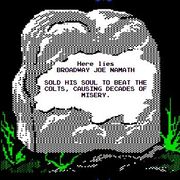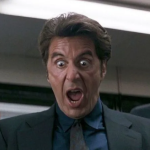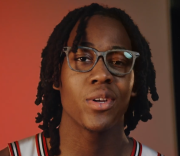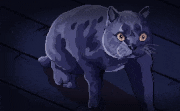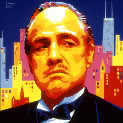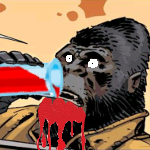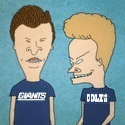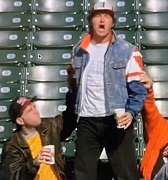- wandler20
- Nov 13, 2002
-

How many Championships?
|
Here it is. It's long. So long in fact that it won't fit in one post.
Part 1:
quote:The Rise and Fall of The Draft Network
In 2018, a draft analysis website launched with the intention of improving NFL draft coverage. It changed the industry. And now it seems to be disappearing. What happened?
ARIF HASAN
MAR 20, 2024
∙ PAID
From 2011 to 2014, a loose network of young draft enthusiasts known as “Draft Twitter” emerged from the online football space. Draft Twitter represented a paradigm shift, refocusing the conversation around the NFL draft around in-depth analysis and skepticism rather than sourcing and traditional reporting.
They were primarily a young group of analysts but what they lacked in training, they more than made up for with an overabundance of energy and enthusiasm.
Draft Twitter produced writers, analysts and even front office personnel scattered across the media and football landscape, with members in positions inside flagship publications like the Ringer, ESPN, the Athletic and Sports Illustrated, college all-star games like the NFLPA Bowl and Shrine Bowl and even football leagues like the AFL, AAF, USFL, XFL and the NFL.
Along the way, one website splashed onto the scene that ended up having an enormous impact. Despite a limited staff, The Draft Network would turn out some juggernauts in the industry, placing writers and analysts at the Ringer, Pro Football Focus and ESPN within just a few years of launching.
That website, once a centerpiece of third-party draft analysis, now seems to be on the verge of shutting down. Wide Left spent three months digging deep into the story find out the answer to one question.
What happened?
“Have you ever seen the Hulu series The Dropout? Elizabeth Holmes. Theranos. She’s running a fugazi company. That is what I compare Paige Dimakos to… I think she’s genuinely a crook.”
As Draft Twitter grew in stature, it wasn't just niche enthusiasts taking note. Football media was about to undergo a sea change, and talent-hungry eyes were turning in Draft Twitter's direction. For a core group of prestige analysts and journalists, what happened was more bizarre than anything that even grizzled media veterans could have predicted.
Wide Left called lawyers, read court documents, talked to dozens of current and former employees, contacted spurned vendors and pulled at threads. In just six short years, The Draft Network featured everything from power plays and Brazilian tech firms, to missing paychecks and a one-of-a-kind mural of vintage smut.
However, Wide Left did not talk to CEO Paige Dimakos. After emails to two different addresses, direct messages to three accounts on two different social media platforms and a text message to a number confirmed to belong to Dimakos, Wide Left received no response.
In this piece:
A Short History of Draft Twitter and The Draft Network
How The Draft Network Changed the Landscape of Draft Content
The Racist Tweets
Paige Dimakos Enters The Company
Paige Dimakos Takes Over
The 2021 NFL Draft Disaster
The Draft Network Gets Sued For Hundreds of Thousands of Dollars
A Talent Exodus
The Porn House
The Money Disappears
A Disastrous Meeting
Another Disastrous Meeting, But in Secret
A Mission To Manipulate
The End of It All
The Draft Network Gets Started
When Draft Twitter was getting off the ground, they produced a melange of websites, largely hosted on platforms like WordPress and Blogger. Some of them are still around today, but most evaporated into the ether. It was difficult to sustain, and there weren’t many successful business models.
Out of the ashes of one of those foundational sites emerged a more modern publication that would change how draft analysis would be conducted and helped set the stage for how new media would cover the draft.
On July 2nd, 2018, over 30,000 fans of the NFL draft found out that they were following a Twitter account called DraftNetworkLLC, much to their surprise. That account tweeted that they were going to launch their website on August 6th, announcing who they were and what they offered.
They explained pretty quickly that they had acquired the Twitter account for a website called DraftBreakdown, which posted broadcast footage from college football games cut to focus on a draft prospect – every play from a quarterback or every snap that a defensive lineman was on the field.
This account, and its attached website, was a godsend for would-be and up-and-coming draft analysts, who would come to rely on the site and the breakdowns embedded there via YouTube to perform their analysis.
It would be no exaggeration to say that DraftBreakdown became a staple in the early Draft Twitter community, enabled by thousands of hours of volunteer work from devotees willing to share cutups of draft prospects, even obscure players who weren’t projected to be drafted and ultimately weren’t.
The site was, of course, illegal.
After repeated takedowns from rightsholders of college football footage, it became difficult for a website like DraftBreakdown to exist – especially without anything definitively transformative about the cutups, which contained no analysis or commentary from the editors.
So DraftBreakdown floundered, and an essential tool for third-party draft analysis was shuttered. Eventually, a black market for college cutups – this time containing access to All-22 footage – formed. But before any of that could happen, there was a Twitter account with a sizable following, especially from draft media, that couldn’t do anything.
It linked to a dead website.
At the same time, JC Cornell and Trevor Sikkema were building a team of draft analysts for a website that would combine mock draft simulation with on-the-ready access to scouting reports. While scouting reports and draft simulators were nothing new, combining them in a slick format looked like it could be a differentiating factor in an increasingly crowded market.
Sikkema had been cohosting an extremely popular draft podcast, Locked On NFL Draft, with his good friend Jon Ledyard. Ledyard, like most members of Draft Twitter, had his fingers in many pies. In addition to the podcast, he’d been doing work covering the Pittsburgh Steelers for scout.com while also doing prospect scouting work for a website called NDT Scouting, headed up by Kyle Crabbs and Joe Marino.
Sikkema and Ledyard had been discussing ideas for a draft-oriented site for some time and this was an opportunity for Sikkema to pitch that concept to someone with the ability to realize that dream.
So, over beers, Sikkema and Cornell hammered out the details of the potential site. Many of the items from Sikkema and Ledyard’s original planning document ended up being core pieces of the site, including what ended up being the centerpiece of the company’s content plan – the Mock Draft Machine.
But first, they needed to recruit some talent. Sikkema was familiar with Crabbs and Marino through Ledyard. Not only did Crabbs have his own company, NDT Scouting – originally called NFL Draft Tracker – he and Marino cohosted the other wildly popular Locked On draft-oriented podcast called Draft Dudes.
Marino and Crabbs were also producing content for FanRag, a popular site that had been straddling the hard-to-define line between blog and traditional online publication.
Cornell contacted the owners of the DraftBreakdown Twitter account to see if something could be worked out. In his words, the Draft Network wanted to provide value to fans of the draft needing more content and missing out on what DraftBreakdown provided.
After hearing about the plans that the Draft Network had, the owners of the DraftBreakdown account agreed to turn over the account and its valuable follower count if they provided a sizable donation to the Wounded Warriors Foundation, which they happily did.
So DraftBreakdown became DraftNetworkLLC, which later became TheDraftNetwork. A cynic may have argued that buying unearned followers was cheating the game and that claim may hold some weight, but TDN was upfront about what they did and provided relevant content to the target audience.
“Getting The Draft Network handle, that was something that I pitched … very early on. The reason why a lot of startup businesses or startup websites failed, is because they can't get off the ground quick enough. You know, there's that cool initial interest, but then there's not really a lot of fire after that,” One founder told Wide Left. “And we looked at the Draft Breakdown Twitter account, specifically, because [the] plan was kind of built around social media presence.”
Wide Left is a reader-supported publication. To receive new posts and support my work, consider becoming a free or paid subscriber.
Subscribed
After details were worked out, the four of them met with Cornell in Florida. As one of them put it, “We went to Sarasota and had a brainstorming session. We walked out of that session with a company.”
That meeting turned into another meeting, this time with Brian Cornell, the CEO of Target, and JC’s father. That led to The Draft Network, with the five founders — the four writers and JC, the chief executive — each holding equity in the company and the Cornells providing funding to get the site off the ground.
After finalizing the arrangement, they finished out their staff with two more additions: Brad Kelly and Benjamin Solak, both of whom were active in Draft Twitter. JC Cornell would work on the business angle while the six others provided content.
The Mock Draft Machine — Building An Edge
By the time they had conceived of the idea, the 2018 NFL Draft had already run its course, so they set their sights on preparing for the college season – watch lists, team needs, too-early mock drafts and so on.
They released a flurry of content on day one and kept up with the hectic schedule. Within a month, they had produced over 300 written pieces of content, or ten pieces a day. They were also driving traffic to the site through the Mock Draft Machine, originally through a developer named SavvyApps.
At the time, Pro Football Focus and Pro Football Network had not launched their machines and the NFL Mock Draft Database was not yet online. Places like FanSpeak and first-pick.com – the second of which is now defunct – had working simulators but, at the time, had an older user interface reminiscent of a bygone era of the internet.
Trades were difficult and there was no way to learn about an unknown player inside of the website.
TDN’s machine resolved to fix that through their own scouting reports and external web development team. They also offered users the opportunity to create their own Big Boards – and to use those boards inside the simulator.
On top of that, their UI advantages extended beyond a mock draft simulator – draft prospect information, like measurables and key biographical information, were easier to read on the site than on sites like nfldraftscout.com, now draftscout.com.
Because of the unique nature of the NFL draft, they had to pay a little more out of pocket for an American development team – one that was familiar enough with football that they didn’t need to learn what a trade was, or why positional designations were important.
The simulator had a trade function and made it trivially simple to pull up an in-window scouting report on any player in the draft. This original feature gave it an edge in the market, allowing users to cut down on extraneous clicks and opening up a wealth of new browser tabs.
What’s more, the user interface was modern, compelling and slick. The website felt good.
The Mock Draft Machine, while not the first on the market, changed the draft conversation across the industry. Now, with a simple way to produce mock drafts, fans became a bigger part of the conversation – and content creators needed to be aware of this.
The machine was the draw, but the content was the anchor. And they were almost producing too much of it.
Writers were beginning to step on each other’s toes – beginning to write one feature before realizing another on the same subject had already been published. Some days would have virtually no new content while another day found the site flooded with new articles, with the first pieces to publish buried at the bottom.
Aside from Cornell’s position as the CEO, no one had taken on formal roles in the company. That needed to change. Ledyard, who had anticipated the problem and had begun messaging writers to better coordinate content, functionally operated as COO – over time, he was given the title of COO, though primarily worked on internal operations.
“I just don't think that [Paige Dimakos] knew how to handle adversity. I think that was a problem. When it twisted, she didn't know who to ask for help, how to get help. I don't think she was honest about what was going on...”
“And, you know, one day it all explodes in her face, but it was a slow leak. It was a slow leak. And I think when everything's going great, I think she's awesome. But the adversity that came, I think she made too many catastrophic mistakes for it to survive.”
His natural inclination for organization as well as his frustration with the operation slotted him into the position. It wasn’t long until he started coordinating through the use of multiple spreadsheets and a Google calendar, with regular check-ins among the other writers.
“He was deliberate about, ‘OK what we can produce, who can produce it, whose responsibilities are what?’,” said one employee.
The Draft Network replicated the all-too-familiar tension found in startups, where the lack of formal roles undermined the operation of the team, primarily composed of content creators. The fact that they were already friends exacerbated those tensions.
The need for accountability clashed with the geniality usually needed to keep friendships intact. Deepening the divide was the fact that they were all remote workers in an age before remote work was the norm. Communication was difficult and incomplete.
Still, content was being produced, the website was getting eyeballs and deals were being made. The website had a premium option that allowed users to save their mock drafts or use more features – and subscriptions were selling.
But there were issues. Disagreements about the direction of the company emerged. As one approach was decided, a new one was imposed. And it very much seemed like Cornell and the writers had different ideas altogether about what style of content would sell.
“We wanted to be grinders. I wanted to be that,” said one employee. Instead, as decisions were made to produce a consistent flow – Mock Draft Mondays, regular scouting reports, and so on – decisions would come down from Cornell that contradicted their in-depth vision.
The deals weren’t as impressive as the writers originally thought they would be, either. Despite their sudden reach and consistent traffic, they couldn’t find many big-name sponsors willing to shell out money.
As one founder put it, “We were being told [that] JC was having meetings with Pizza Hut, Coca-Cola, Dominos and all this stuff. And these meetings ‘went great,’ but nothing ever happened to these meetings, because it turns out the meetings were not going great.”
The Draft Network Takes Off, And Nearly Stumbles
Those were concerns, but they were secondary. January validated their efforts as the 2019 draft season ramped up – the Mock Draft Machine was pulling in hundreds of thousands of users and the future was looking up.
They had new content plans in the works too, including a livestream for draft events like the Senior Bowl, NFL Combine and, naturally, the draft itself. But the staff was primarily composed of writers without much on-camera experience. They needed a host to facilitate their on-screen presence.
Crabbs and Marino had worked with Paige Dimakos at FanRag, which had been in dire straits. They contacted her to help run their draft show at the Senior Bowl and things went off swimmingly. Not only could she run the show smoothly and had experience with the difficulties of livestreaming, she had contacts through her family that would allow them to secure sponsorships.
“I think [Paige Dimakos] just peddled a lot of BS.”
Their live coverage at the Senior Bowl was sponsored by Mercedes-Benz Corporate Sales, a pretty good get for such a new media outlet.
The Draft Network was rapidly ascending, and the combination of their whirlwhid output, high-quality content and excellent production value made them a good bet. But they hit an obstacle – old tweets from Ledyard resurfaced, retweeted by the account The Draft Network had acquired from Draft Breakdown.
Ledyard’s tweets from 2014 contained a full-throated defense of former Eagles receiver Riley Cooper’s use of a racist slur at a concert as well as his own use of a homophobic slur. Ledyard’s tweets also trafficked in racist stereotypes. It was an ugly scene.
Draft Website Posts One of Their Writers Jon Ledyard Homophobic Tweets; The Internet Detectives Found More of Them and Some Borderline Racist Ones As Well; Details on His Punishment (Deleted Tweets)
The fact that The Draft Network’s account was retweeting them was a particular blow. Management was reeling – they had no idea who had retweeted Ledyard’s old tweets or what to do with this particular public relations problem as the company had just gotten off the ground.
In the short term, TDN suspended Ledyard while investigating what was happening with the account. They changed passwords, removed access, disabled apps and still couldn’t figure it out.
What likely happened was that legacy access to the DraftBreakdown account through an app similar to TweetDeck. This prior access allowed an authorized user of the old account access to the new TheDraftNetwork handle despite changed passwords and username – similar to what happened to TheGameDayNFL account in early January.
As for Ledyard, introspection led him to offer his resignation, which Cornell accepted.
Wide Left confirmed that the idea and decision to resign came from Ledyard, not other members of the company – a necessity if he wanted to live his beliefs that behavior in the past required accountability, no matter how much ignorance played a role.
It was a difficult moment, in part because there were no winners. Inaction would have led to significant and justified criticism in a space where reporters hold communicative power over a largely Black industry.
At the same time, there was no shortage of football fans who never saw a big deal with racist Tweets. Seeing Tweets supporting and excusing what Ledyard had said in the past was enough for him to want to walk away from the space. Staying on staff would communicate the wrong message about who he was and wanted to be.
The Draft Network put out a statement that Ledyard had resigned, with Ledyard explaining his decision to resign in his own piece on Medium, a separate piece from one addressing his tweets from five years prior – one that essentially served as a script to his video on the matter.
Ledyard’s reflections on how structural racism plays out through racist agents – who may themselves not realize how racist they are – informed his commitment to pursue community outreach. Though he had already engaged in mentoring at-risk youth, the controversy pushed him to confront racism, homophobia, sexism and transphobia in his own community head-on.
It took some time, but Ledyard returned to football writing while still engaging in community outreach, often a rare voice in the white and Christian rural communities of Pennsylvania.
Paige Dimakos Takes On More
Nevertheless, Ledyard’s departure left The Draft Network with an organizational vacuum. Internally, the slack was picked up by Crabbs, who adopted the role of Director of Scouting. He would continue to manage the content side of the site.
Dimakos, initially brought on as a freelancer for hosting purposes, kept in touch with Cornell and The Draft Network. Over time, she took on an external organizational role within the company – formally as an on-air host and informally managing more and more of the business side alongside Cornell.
Ledyard’s absence meant there was room for another COO, and Dimakos assumed the mantle. The pattern of finding a leadership vacuum and filling it would be common to her tenure.
“I literally looked and I go, ‘You think she's spending my money on this suite right now?’ Like probably one of my monthly payments is one of that [suite’s] nightly payments”
Things were looking up for TDN; they had successfully pulled off another live show – this time covering the 2019 NFL draft in Nashville – and were operating like a well-oiled machine.
The added stability at the top and the organized content operation allowed writers like Solak and Jordan Reid, added to the roster shortly after the 2019 draft, to shine. They also added Jaime Eisner, who had worked with Crabbs, Marino and Dimakos at FanRag.
Eisner had been an editor at FanRag and would take on those roles with TDN, but also helped co-host a fantasy football podcast as TDN attempted to fill every available platform with content.
However, friction became apparent in the podcast space. Sikkema and Ledyard had a deal with the Locked On network, hosting the incredibly popular Locked On NFL Draft podcast. Sikkema and Ledyard weren’t the only ones with a popular podcast independent of TDN.
Marino and Crabbs were hosting the Locked on Draft Dudes podcast, meaning that listeners to the popular Locked On Network were receiving analysis from four TDN analysts.
Their daily commitment to that podcast, outside of the TDN infrastructure, would make it difficult for them to provide podcast content for The Draft Network directly. Locked On NFL Draft was lucrative and it would be a lot to give up – but the reason it was lucrative was its enormous listener base, one that could be activated as TDN users. Essentially, The Draft Network had a free advertising platform built in to their model.
Nevertheless, this outside commitment generated some tension. Ad revenue was flowing into the Locked On accounts off the backs of employees at TDN. Initially, Cornell wanted Ledyard and Sikkema to cease podcasting for Locked On and begin an internal podcast network with The Draft Network.
Eventually, Sikkema and Ledyard agreed to a surprising deal – they would turn over their salary from the Locked on NFL Draft podcast to The Draft Network so that they could keep producing it and receive a small bump in pay in return. This would allow them to keep the brand profile and grow TDN, but it was a pretty significant concession.
After Ledyard resigned from both his position with TDN and from Locked On, Solak filled his role on the podcast. He, too, was surrendering significant revenue to TDN.
It wouldn’t be the last time founders were asked to turn over revenue.
Transition Of Power
That wouldn’t come until later, however. In the meantime, a crisis was brewing. Cornell’s on-and-off availability with employees was becoming a larger problem and his lack of availability put the company in jeopardy.
It wasn’t just availability that was a problem; his relationship to employees was becoming increasingly contentious. This was becoming an issue.
In late 2019, Cornell made a decision to step back from the company with the intention of returning to his CEO role after his leave of absence. As he took his sabbatical, Dimakos stepped into the CEO role, while resolving some of the inconsistencies in the direction of the company.
Dimakos had already earned the trust of Cornell and investors, and her growing role in handling the operations of the company made her a natural fit to fill in when Cornell left. This produced more consistent internal messaging.
As one employee told it, Dimakos narrowed the focus of the team to maximize what they were doing, and isolated opportunities to expand their footprint. That meant more resources poured into the Mock Draft Machine, their most popular product, and more live content on their YouTube channel and hosted on the site.
Image via Paige Dimakos’ LinkedIn
“We kind of needed her,” said another employee. Dimakos provided stability at a position where there was none – a universal feeling among the employees interviewed for the piece. This stability set up a successful 2020, difficult in the face of the COVID-19 pandemic.
Still, there was trouble brewing. To control costs, the company had already moved from SavvyApps to ArcTouch – a company incorporated in the United States but one that employs a large chunk of its workforce in Brazil.
That allowed ArcTouch to offer reduced rates for a website seeing increased traffic. That still carried a hefty price tag – north of $20,000 a month. The Mock Draft Machine was an incredible asset but required enormous maintenance.
Cutting costs here did come with problems – because football is a uniquely American sport, it is sometimes difficult to transmit the quirks of the draft to someone unfamiliar with the concept. It fell on Solak to do that, becoming a de facto intermediary between the needs of readers and the developers bringing that vision to life.
In order to cover those burgeoning costs, The Draft Network was aggressive about signing deals with new advertisers and used that to bring in new staff, hiring in a year when many sports media companies were downsizing. 2020 was a year of growth. 2021 was poised to be a year of prosperity.
It was a disaster.
The Draft Network Cracks At the Seams
The return of live events to the NFL schedule should have meant the return of The Draft Network’s persistent presence on the ground. It should have meant a triumphant return to live coverage. Instead, those live events exacerbated growing issues at the company.
Nothing better represented that than their live coverage of the 2021 NFL draft, done remotely in Atlanta. That live show was plagued by technical issues. There were outages in coverage, difficulties accessing on-screen information for on-air talent to refer to and delays syncing the feeds between multiple locations. Sometimes commercials would cut in mid-sentence, creating awkward moments in conversation.
The below clip is unmodified, as it appeared on stream.
Segments would rewind live on stream and repeat before abruptly cutting away to a new segment, audio would cut out, the wrong graphics would play on screen – sometimes suggesting that the wrong team was on the clock – and interviews were left hanging. Camera angles weren’t planned ahead of time, so cutaways to analysts often meant interviews with the back of someone’s head.
The (first) first-round live show was an hour and nine minutes, but 40 minutes – the majority of its uptime – were devoted to pre-draft analysis before Jacksonville was ever on the clock. After the Jaguars were slated to select, the live show was slow to update viewers on Jacksonville’s decision to draft Trevor Lawrence. The graphics didn’t give viewers the information they’d come to expect from live draft coverage.
While the livestream was just over an hour, the first round of the NFL draft itself was about four hours. All they could do was break down the fantasy implications of the Lawrence pick before the stream cut out, meaning that their live show didn’t even get to the second pick of the draft.
They re-established their up-link and created a new stream, but it, too, faltered. The damage was done – viewership dropped off with every successive drop and restream, dropping from 19,000 viewers to 5,000 viewers to 2,000 viewers on their third and final attempt to stream coverage of the first round.
In between streams, they missed a bevy of picks and didn’t have the ability to provide viewers with the analysis they tuned in for.
Concurrently, the website was undergoing a server attack of some sort, characterized by Dimakos later as a DDoS (Distributed Denial of Service) attack, a common cyberattack meant to overwhelm a server’s capacity for traffic with thousands of requests.
In the background of all of this, Cornell had returned from his leave of absence. It was an awkward situation, given that Dimakos had essentially solidified herself as the chief executive and had made herself the primary contact point for vendors and employees. Cornell’s departure was necessary but that doesn’t means his return was met with open arms.
His presence and role occupied an uncomfortable liminal space between consultant and CEO, a situation that was untenable for everyone. Cornell was being frozen out.
To resolve that, shares of The Draft Network were sold to 4th and One LLC, headed by Dawn Hudson, the former Chief Marketing Officer for the NFL and former CEO of Pepsi-Cola North America. This move officially gave Dimakos the CEO title.
This was not unexpected for Cornell. For him, it was a better play to take the offer, sell his shares and move on.
The new investor would be critical for The Draft Network, too. It turns out that this was a pretty good time for an infusion of cash.
ArcTouch — The First Lawsuit
After the completion of the sale, in July of 2021, ArcTouch filed a lawsuit against The Draft Network alleging months of missed payments.
As TDN’s web developer, ArcTouch had been providing support for the website and all of their products – including the Mock Draft Machine – since 2019 and had received very little of what they were owed for their services, according to the lawsuit they filed against the company in the state of California.
At the very least, they had not been paid anything at all since December of 2020. ArcTouch sent numerous emails to The Draft Network in order to recover what they were owed, a number that would end up in the hundreds of thousands of dollars.
Their initial agreement, signed in the summer of 2019, charged The Draft Network $20,000 a month for web development and other services. While executing that agreement, they were in the works to sign a new agreement worth twice as much.
Though they had not received the money owed them, ArcTouch had signed the new deal in the summer of 2020 with The Draft Network, under assurances by Cornell, and later Dimakos, that they would receive what was owed, and more, once TDN received payment from advertisers totaling $500,000.
That amount would be necessary – in ArcTouch’s lawsuit against the company, they alleged that The Draft Network owed $389,565.95, plus interest. ArcTouch also indicated, per their operating agreement, that they – not The Draft Network – were the owners of the intellectual property behind the development of the website until receipt of payment.
ArcTouch submitted emails from both parties in their filing with the Superior Court of California that corroborate the missing payments and the total owed. Emails from Cornell and Dimakos, as well as a liaison employed by Dimakos, attempted to work out payment plans and provide good-faith reasons ArcTouch hadn’t been receiving payment for their services.
But the nature of the agreement was such that the code behind the website and the Mock Draft Machine would legally be the property of ArcTouch, not TDN, because TDN had not executed on their end of the deal. ArcTouch wasn’t alone, either. At least two other vendors confirmed that by 2021, The Draft Network hadn’t paid them for services rendered.
Some of these vendors had worked with The Draft Network for years — they never had an issue receiving payments or communicating with Cornell, but were frustrated with Dimakos.
Vendors described a pattern where Dimakos would initially answer emails from vendors asking about delayed payments with apologies. She would then slowly phase out her responses to them, with longer delays between follow-up communications until she stopped responding entirely.
Employees were not aware of this. All they knew was that when they had an issue with the site or the simulator that ArcTouch wouldn’t respond to them, unreachable by both phone and email. Dimakos reassured the team that she would take care of it, but the situation with ArcTouch was never resolved.
Dimakos did not inform the employees about the lawsuit for over a year. As they worked out a payment plan with ArcTouch, they switched to another web development company in 2021, Lifted Logic. While the cracks were beginning to form, TDN would be hit with more blows.
Exodus
In early August of 2021, Solak departed The Draft Network to join the battery of writers at the Ringer. Later that month, Sikkema left for Pro Football Focus. Not too long afterward, Jordan Reid joined ESPN. This talent drain left TDN in a bind – they needed new hires but also couldn’t float the capital to pay off key vendors.
Those departures did, however, present an opportunity for Dimakos to build her version of internal rapport. According to multiple former employees, Dimakos led a character assassination campaign against at least one of the departing employees, fabricating statements from a former employee to suggest that he had trashed The Draft Network on the way out and had not given Dimakos or the company any prior notice that he would be leaving.
The history of communication between that former employee and Dimakos showed that this was inaccurate; he – and the other departing employees – had given Dimakos proper and substantial notice, and had provided opportunities for TDN to match the offer.
Leave a comment
Multiple phone calls and emails later in the exchange, that employee left with a final message – a several-paragraph email thanking the company for the opportunity and with high hopes that both would succeed going forward.
Despite that, Dimakos characterized the departure as a betrayal. The relationship between that employee and his former co-workers, many of whom had been friends for years prior to the founding of The Draft Network, deteriorated. It wasn’t until years later that they would reconnect and correct the record.
Multiple employees used the phrase “gently caress them, we don’t need them,” to characterize Dimakos’ attitude towards the departures. Instead of celebrating the successes of their most prominent employees, the company’s leadership adopted an attitude of “TDN vs the world.”
The kinds of problems that cropped up during the draft repeated in kind, though not necessarily severity.
In the meantime, the infusion of capital from Hudson’s investment allowed TDN to go on a hiring blitz. They brought in a raft of employees at all levels, from interns to part-time freelancers to fully employed staffers. They secured sponsorship deals – such as a promotion with Bud Light that went well during the SEC Championship game – and had new talent.
Photo by Todd Kirkland/Getty Images
Behind the scenes, however, vendors were missing payments. In addition to the mounting liabilities from the ArcTouch lawsuit, a production company that TDN had worked with for years suddenly found themselves sending email after email looking for missed payments. Photographers and videographers were getting stiffed and the liabilities were adding up.
Individual contractors were missing anywhere between $10,000 and $45,000 in lapsed payments. Other vendors Wide Left spoke to had similar stories to ArcTouch – emails that sat unanswered for weeks, promises that they would be made whole followed by silence.
Events lost their coordination, too. While Crabbs and Marino did a good job making sure that the day-to-day operation of the content on non-event day was well-orchestrated, no one had been given a role that would allow them to coordinate team travel and events in an efficient way.
“Her whole deal is that she ghosts people. Instead of confronting issues head-on. And it’s everyone else’s fault. It’s JC Cornell’s fault, it’s Dawn and the new investor’s fault. It’s never her fault.”
Staff would often show up to events without instructions or a clear plan of action. They would have to direct themselves aimlessly, figuring that maybe it would be good content to perhaps interview a player or get in contact with an agent.
Much of this was unnecessary; in 2022 there were at least four events that Dimakos, the point person for all of the logistics and coordination, would bail on the night before or even the day of, leaving staff to fend for themselves.
Even when Dimakos was in attendance, coordination was lacking. These issues were present during the coverage of that year’s Senior Bowl and the Super Bowl but would become substantially worse as time went on.
“The Porn House”
In order to prepare for the 2022 NFL Draft, the company brought their contributors to Las Vegas with multiple buildings rented out – a few for the contributors to stay and one to host vital content like the live show and interviews with draft prospects.
But there were a few problems. The “draft house” – reserved with the intent of hosting well-produced video content – was curated specifically to attract and be rented out to sex workers. The rooms were filled with pornography, the closets were packed with sex toys and the drawers were full of lube and condoms.
The picture above is blurred here but was not on site
Employees were forced to hastily clean up the house and make it presentable before draft prospects arrived for interviews. They ended up having to make a run to a Party City in order to hang cloth to cover up sexually explicit murals.
They were on a pretty tight deadline – Liberty quarterback Malik Willis was scheduled to show up very soon after they had set up. Unfortunately for them, Willis had arrived early and they had to quarantine him to a section of the house that they had effectively sanitized while they worked on the rest of the property.
There was even a moment of alarm when Willis expressed he had to go to the bathroom. “We were like, ‘we’ll walk you there,’” said one employee. “We were afraid he would open the wrong door and find all these sex toys.”
Meanwhile, the owner of the property was on the premises, along with several sex workers. It was unclear why they remained on the property that had been rented out to The Draft Network, but their presence was uncomfortable to employees.
One reason may have been the fact that the owner or a previous tenant had left bags of cocaine inside the outdoor patio furniture.
It was not particularly difficult to find, either. As one employee set up to relax by the pool, one of the bags was nearly in plain view.
While they were navigating this disaster, employees were forbidden from going to the Las Vegas strip, where most draft prospects, NFL employees, team employees and much of the media were staying.
TDN did not apply for credentials to attend the draft and employees who had acquired credentials independent of TDN were not allowed to attend.
They had plenty to do on the property regardless. As one might expect of a property geared towards on very specific type of content at the exclusion of all others, there wasn’t much in the way of office furniture even if it was otherwise well-furnished. There were, for example, cameras everywhere.
Because The Draft Network had branded itself as the “NFL’s 33rd Front Office,” their strategy had always been to operate like a war room on draft day, which meant a conference-room style setup as the draft was live. Their conference room didn’t have any office chairs.
However, it did have a stripper pole.
The chairs that the company ordered didn’t arrive until Thursday, the day of the draft. That meant scrambling to assemble seven office chairs as the clock ticked down until the live show started. They didn’t waste what assets they had, though - the lights from the stripper pole and its platform were repurposed to great effect as uplighting.
Even with all of these problems, the live show itself went well, with nearly no evidence that the house they had rented out for the show was meant for adult films.
The only clue left in the open was a mouthwash dispenser, confirmed by a former employee, that made a cameo appearance in a few shots of the show itself – a benign object that only hints at its function to those familiar with the prevalence of mouthwash on adult film sets.
It’s unclear what happened to the office chairs after the trip given how difficult they are to move across large distances. It could be the case that there is now an adult film studio with a fully functioning conference room.
But that wasn’t the only property-related snafu on the trip. One of the buildings rented out to house the contributors was subpar – eleven people sleeping in accommodations designed for six. The analysts were forced to purchase air mattresses and other materials in order to sleep. Many slept on the floor. One set up an air mattress in a closet. They were not reimbursed.
Dimakos was not staying at that property.
“Where Is My Money?”
The stress on vendors would eventually turn into stress on payroll. By mid-July, employees were noticing late paychecks – at first by a few days, but delays grew longer and longer.
Questions about payroll largely went unanswered by Dimakos in ways very similar to how she responded to vendors looking for absent payments. Those working closely with her would occasionally see glimpses of bank statements or account reports on screen, showing no funds available in company accounts.
There may have been a reason that The Draft Network was in a particular squeeze as the summer of 2022 came to an end.
|










